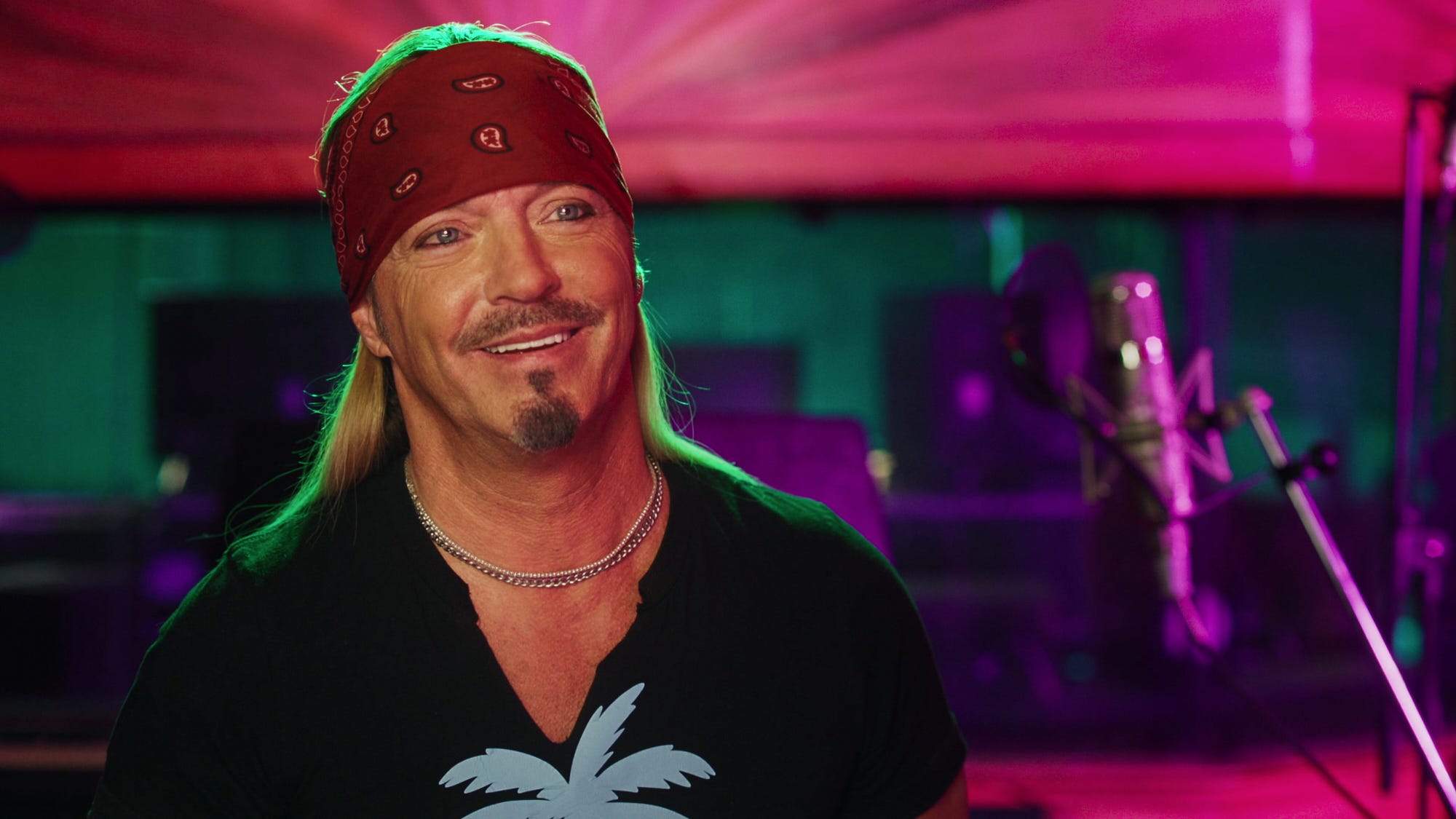
BRET MICHAELS, NEW DOCUSERIES LOOK BACK AT ’80S HAIR METAL DEBAUCHERY: 'A DIFFERENT TIME'
Break out the Aqua Net and lock up your daughters.
That was the mantra throughout the 1980s, when leather-clad rockers with hair teased skyward, sex appeal gushing and guitar solos screaming, prowled the screens of MTV and the clubs of the Sunset Strip in Los Angeles.
Their era of debauchery, highlighted by some enduring rock anthems, is distilled in "Nöthin’ But a Good Time: The Uncensored Story of ’80s Hair Metal,” a three-part docuseries arriving Sept. 17 on Paramount+.
Start the day smarter. Get all the news you need in your inbox each morning.
The title, taken from the 1988 Poison hit, includes the umlauts popularized by Mötley Crüe, an early focus in the series that is as loud and fun as the period it examines. Director Jeff Tremaine (“The Dirt”) relies on vintage interviews, inventive animation and current commentary from first-handers including Poison’s Bret Michaels, Ratt’s Stephen Pearcy, Extreme’s Nuno Bettencourt, Guns N’ Roses drummer Steven Adler and Corey Taylor, lead singer for the harder-edged ’90s metal band, Slipknot, and an unabashed defender of ’80s glam.
But even as the series leads to the inevitable extinction of the hair metal movement – back when music had such culture-controlling phenomenas – after grunge and Nirvana arrived in the early ‘90s, many of the artists spotlighted continue to thrive.
“After nearly 40 years of making music, my same attitude exists,” Michaels tells USA TODAY. “I have more energy than ever and I’ll never mail it in. And that’s what ‘Nothin’ But a Good Time’ (the song) was about. It was about absolutely enjoying that moment with a great guitar riff and hooky chorus. It’s relevant in its simplicity.”
Here are some other tidbits from the docuseries.
More: Linkin Park's new singer Emily Armstrong explodes in Los Angeles concert tour kickoff
’80s hair metal was a combination of 'hard work and passion'
The breeding ground for the majority of hair metal bands was the clubs lining the Sunset Strip. The Whisky a Go Go, The Roxy, the Rainbow Bar and Grill all offered dank playgrounds for bands that knew they were one fist-pumping chorus away from superstardom, including Quiet Riot, Mötley Crüe, Ratt, Great White, White Lion and Guns N’ Roses.
While Poison hailed from small-town Pennsylvania (Mechanicsburg) – rare East Coast infiltrators to the Hollywood scene, along with Skid Row, Bon Jovi and Cinderella (the latter two notably absent in the docuseries) – the band knew they had to drive cross-country and move to the mecca of metal.
The primary form of promotion in a pre-internet world were flyers, and bands sniffing the Sunset Strip would make thousands per show, stapling them to telephone poles and slipping under car windshield wipers.
It was a cutthroat competition, as Michaels recalls in the documentary, with band members staying up overnight to make sure their flyers were the most prominent on the poles. Poison stumbled upon a victory when the local Sir Speedy print shop unloaded a stash of neon green paper on the band, helping their promos stand out and unwittingly giving Poison its signature color.
But the promotional side of the business was exhausting for the young bands seeking to indulge in the holy trinity of sex, drugs and rock ‘n’ roll.
“It was a combination of innocence, hard work and passion,” Michaels says now. “Poison’s work ethic was unstoppable. When everyone else was renting a limo to pull up to the club, we’d pull up in a windowless (Chevrolet) Chevette at the Whisky because all of our money went into promotion.”
The rise of the power ballad
The series dips into the irony that for many hair metal bands, their biggest successes weren’t the anthems with finger-bleeding guitar solos and skyscraping choruses, but the exposure of tender feelings.
The power ballad, that lush marriage of slowed tempos, heartfelt lyrics and intensifying drama, existed before the ’80s eruption (see: KISS’ “Beth” from 1976).
But Mötley Crüe landed a major hit – and memorable on-the-road video – with “Home Sweet Home,” Warrant achieved its highest success on the rock charts with “Heaven” and Michaels, both with Poison and solo, still incites a sea of lights whenever he strums the first chords of “Every Rose Has Its Thorn.”
“I wrote that in a mini-Winnebago outside a honky-tonk in Dallas, where we had played to maybe 50 or 100 people,” Michaels tells USA TODAY of Poison’s No. 1 Billboard Hot 100 hit in 1988. “I came back to the bus, me and my girl at the time had broken up and it just sparked me. Music saved my life. It healed me.”
More: Brutally honest reviews of every VMAs performance, including Chappell Roan and Katy Perry
How sex sold rock 'n' roll
Along with the vacuous meaning in many a glam metal hit (no one is ever going to confuse the lyrics of Europe’s “The Final Countdown” with Dostoevsky) came the videos best summarized as lots of half-naked women and cars.
The “hot girl” theme of Warrant’s unsubtle “Cherry Pie,” Whitesnake’s “Here I Go Again” and Mötley Crüe’s “Girls Girls Girls” might not have aged well, but the bands are unapologetic about an era that accepted misogyny.
Warrant drummer Steven Sweet says in the series that at the time, the band never thought that model Bobbi Brown prancing around in her underwear in “Cherry Pie” was offensive.
Michaels offers a similar diplomatic take, saying the bands possessed a frat boy mentality.
“We were living in the moment, a bunch of college-aged kids, and, speaking for myself, there was no coercion,” he says. “Everyone was having fun and rock was exciting. It was a different time, but there was never a hidden agenda.”
This article originally appeared on USA TODAY: Bret Michaels, new docuseries look back at ’80s hair metal debauchery: 'A different time'
2024-09-17T12:13:45Z dg43tfdfdgfd